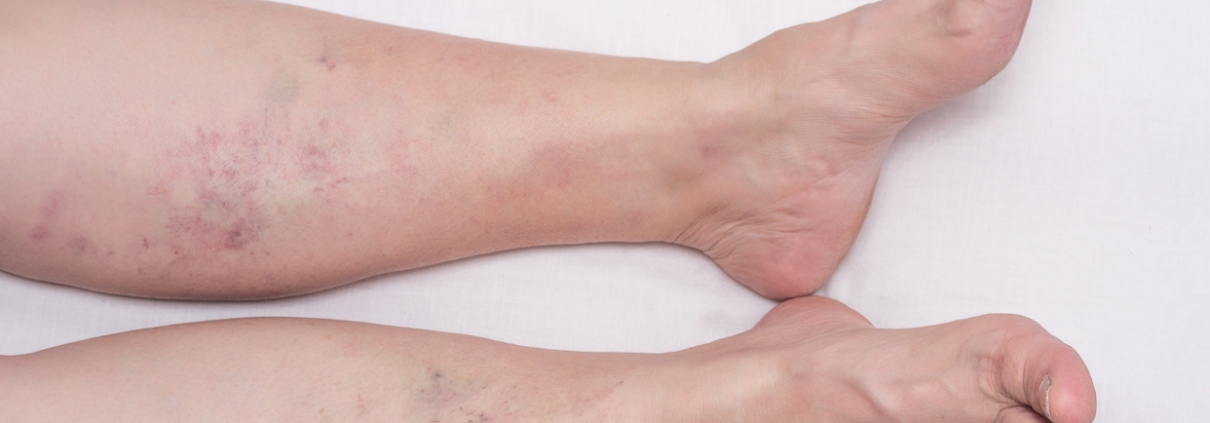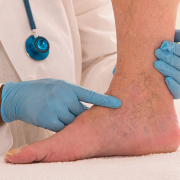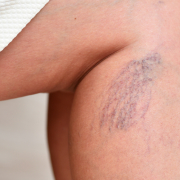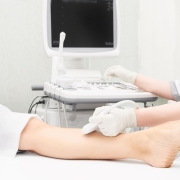5 Myths About Venous Insufficiency
Venous insufficiency is when the veins in the body have some difficulty pushing blood back to the heart for reoxygenation, re-nourishment, and recirculation. Whereas the arteries deliver fresh blood from the heart to all parts of the body in order to bring nutrients and oxygen to the cells, the veins deliver the depleted blood back to the heart.
The veins are much farther away from the heart in the circulatory system than are the arteries, so the pumping force needs some help. Therefore, veins have tiny valves that help push the blood to move in one direction and not to flow backward.
When the valves in the veins do not work properly, this is called venous insufficiency. This can cause the blood to flow backward or to cause pooling in the veins. This is often most obvious in the legs, evident as varicose veins and spider veins.
It is estimated that 40% of Americans have venous insufficiency. It tends to occur most often in people who are over 50 years of age.
Fortunately, the condition is treatable. Let’s talk about a few of the myths surrounding vein insufficiency and who you can talk to in order to get rid of your varicose veins and spider veins.
Myth #1: Venous Insufficiency Is Always Hereditary
While venous insufficiency is often hereditary, it may develop even if it is not in your family. Likewise, just because your mother or aunt has had varicose veins and spider veins does not mean that you will.
A person can develop venous insufficiency due to lifestyle: sitting too much, standing too much, or being outside and acquiring sun damage. It can also happen during pregnancy, during the natural aging process, and due to fluctuating hormones.
Myth #2: Men Almost Never Have Venous Insufficiency
Men may not be as prone to the condition as women are, but men who develop venous insufficiency tend to experience more severe symptoms than women do. This may be partly due to the fact that men aren’t as likely to seek medical attention for this type of condition.
Myth #3: Venous Insufficiency Is Merely a Cosmetic Issue
Women are likely to seek treatment to address the issue because it is widely considered to be cosmetic. However, pooling of blood in the veins can lead to pain and blood clots, so it is indeed a medical condition and not merely a cosmetic issue.
A vein specialist can remove the problematic veins via a relatively simple in-office procedure. The body will simply reroute the blood through other adjacent veins, and the treated vein will be naturally absorbed by the body.
Myth #4: You Can Never Get Rid of Varicose Veins
You may have varicose or spider veins because of an underlying health condition. Treating the underlying cause of venous insufficiency is the most successful method for ridding the patient of the symptoms associated with the condition. When the problem is addressed early, the vein treatment is more successful.
Myth #5: Venous Insufficiency Doesn’t Affect Young People
Venous insufficiency is actually quite common for pregnant women to experience. One of the main reasons why pregnant women can develop varicose veins is hormonal changes, which can weaken the vein walls. Young people who are overweight are also susceptible to the condition because of the excess pressure being placed on the veins.
Vein Doctor in Kansas City, MO
Don’t ignore the signs and symptoms of venous insufficiency – it’s not just a cosmetic issue. Over time, the condition can cause pain and inflammation; if left untreated, the blood vessels may burst, creating skin ulcers and even the potential of a dangerous blood clot.
Dr. Scott Darling at Missouri Vein Specialists can diagnose and treat venous insufficiency, varicose veins, and spider veins through minimally invasive vein procedures. If you have any questions or would like to schedule a consultation with Dr. Darling, contact our friendly staff today by calling (816) 792-3400 or by filling out our appointment request form online now. We look forward to seeing you!












